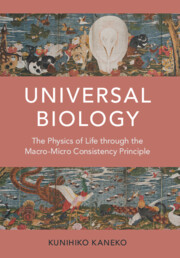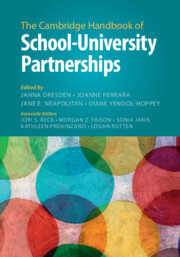Refine search
Actions for selected content:
923 results
Chapter 2 - Brief Cognitive Assessment
- from Section 1 - Introductory Chapters on Dementia
-
-
- Book:
- The Behavioral Neurology of Dementia
- Published online:
- 17 November 2025
- Print publication:
- 11 December 2025, pp 9-19
-
- Chapter
- Export citation
45 - New Dynamics in Twenty-First-Century Anthologies
-
-
- Book:
- The Cambridge History of Australian Poetry
- Published online:
- 19 November 2025
- Print publication:
- 11 December 2025, pp 856-884
-
- Chapter
- Export citation
Chapter 3 - Twenty Questions about Employment Testing Bias and Unfairness in Belgium
-
-
- Book:
- Global Perspectives on the Definition, Assessment, and Reduction of Bias and Unfairness in Employment Testing
- Published online:
- 04 November 2025
- Print publication:
- 20 November 2025, pp 65-87
-
- Chapter
- Export citation
Chapter 6 - Twenty Questions about Employment Testing Bias and Unfairness in France
-
-
- Book:
- Global Perspectives on the Definition, Assessment, and Reduction of Bias and Unfairness in Employment Testing
- Published online:
- 04 November 2025
- Print publication:
- 20 November 2025, pp 129-152
-
- Chapter
- Export citation
Chapter 15 - Twenty Questions about Employment Testing Bias and Unfairness in Nigeria
-
-
- Book:
- Global Perspectives on the Definition, Assessment, and Reduction of Bias and Unfairness in Employment Testing
- Published online:
- 04 November 2025
- Print publication:
- 20 November 2025, pp 304-316
-
- Chapter
- Export citation
Chapter 5 - Changing Times – Patient and Public Involvement in Research
- from Section 1 - Principles of Research
-
-
- Book:
- Research Methods in Mental Health
- Published online:
- 31 October 2025
- Print publication:
- 20 November 2025, pp 65-80
-
- Chapter
- Export citation
1 - The Potential of Universal Biology
-
- Book:
- Universal Biology
- Published online:
- 11 November 2025
- Print publication:
- 20 November 2025, pp 1-30
-
- Chapter
- Export citation

Justice, Equity, Diversity, and Inclusion in the United States
-
- Published online:
- 19 November 2025
- Print publication:
- 30 October 2025
-
- Textbook
-
- You have access
- Open access
- Export citation
Reassessing ‘recovery’ in the light of Mad Studies: a survivor perspective
-
- Journal:
- Irish Journal of Psychological Medicine , First View
- Published online by Cambridge University Press:
- 17 November 2025, pp. 1-5
-
- Article
-
- You have access
- Open access
- HTML
- Export citation
Recovery revisited: a critical reflection on the suitability of recovery frameworks for child and youth mental health services
-
- Journal:
- Irish Journal of Psychological Medicine , First View
- Published online by Cambridge University Press:
- 14 November 2025, pp. 1-5
-
- Article
-
- You have access
- HTML
- Export citation
Chapter 1 - What Is a Local Priest?
-
- Book:
- Local Priests in the Latin West, 900–1050
- Published online:
- 31 October 2025
- Print publication:
- 13 November 2025, pp 21-45
-
- Chapter
-
- You have access
- Open access
- HTML
- Export citation

Universal Biology
- The Physics of Life through the Macro-Micro Consistency Principle
-
- Published online:
- 11 November 2025
- Print publication:
- 20 November 2025

The Cambridge Handbook of School–University Partnerships
-
- Published online:
- 05 November 2025
- Print publication:
- 07 August 2025
1 - What Is Justice, Equity, Diversity, and Inclusion?
- from Part I - This Is America!
-
- Book:
- Justice, Equity, Diversity, and Inclusion in the United States
- Published online:
- 19 November 2025
- Print publication:
- 30 October 2025, pp 3-27
-
- Chapter
-
- You have access
- Open access
- HTML
- Export citation
Chapter 19 - Psychosocial Approaches in CAMHS
-
-
- Book:
- Seminars in Child and Adolescent Psychiatry
- Published online:
- 10 October 2025
- Print publication:
- 30 October 2025, pp 296-312
-
- Chapter
- Export citation
Social participation through the lens of diversity: insights from three social groups of older people in Chile
-
- Journal:
- Ageing & Society , First View
- Published online by Cambridge University Press:
- 27 October 2025, pp. 1-25
-
- Article
-
- You have access
- Open access
- HTML
- Export citation
Chapter 10 - Concluding Remarks
-
-
- Book:
- Leadership in the Ancient World
- Published online:
- 14 September 2025
- Print publication:
- 16 October 2025, pp 223-226
-
- Chapter
- Export citation
Inclusive palliative care for LGBTQIA+ individuals: A socioecological perspective on barriers and enablers
-
- Journal:
- Palliative & Supportive Care / Volume 23 / 2025
- Published online by Cambridge University Press:
- 13 October 2025, e183
-
- Article
-
- You have access
- Open access
- HTML
- Export citation
Environmental drivers of biodiversity and community structure in marine soft sediments of the Vestfold Hills, East Antarctica
- Part of
-
- Journal:
- Antarctic Science , First View
- Published online by Cambridge University Press:
- 09 October 2025, pp. 1-20
-
- Article
-
- You have access
- Open access
- HTML
- Export citation
6 - Episodes in Rival Narratives
-
- Book:
- The Narrative Conflict of Traditions in the Late Antique World
- Published online:
- 22 September 2025
- Print publication:
- 09 October 2025, pp 198-229
-
- Chapter
- Export citation
